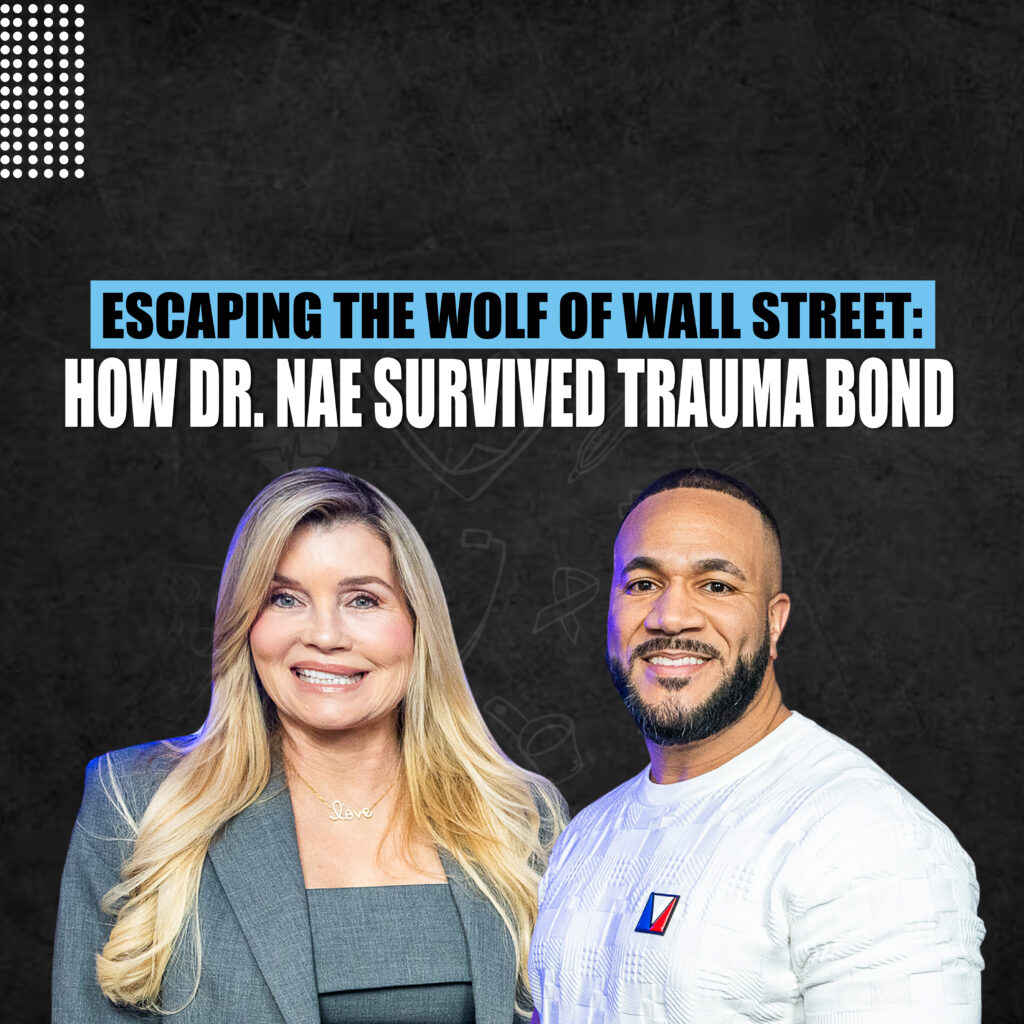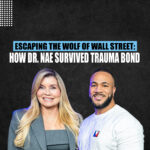What if the relationship you thought was the love of your life was actually a carefully crafted trap, slowly eroding your sense of self-worth and independence—and no one was telling you how to break free?
That’s not a dramatic exaggeration—it’s a harsh reality many people face in the grip of trauma bonds. And it’s exactly why Dr. Nadine Macaluso, a leading expert in trauma recovery, is on a mission to help individuals understand and escape these toxic cycles.
In a transformative episode of the “A Healthy Point of View” podcast, Sam Tejada, CEO and Founder of Liquivida®, sat down with Dr. Macaluso to delve into the complex world of trauma bonds. Their conversation explored the hidden dangers of emotional manipulation, the long road to recovery, and how individuals can reclaim their power and rebuild their lives after breaking free from toxic relationships.
Escaping the Wolf of Wall Street: How Dr. Nae Survived Trauma Bond | Ep. 46

Understanding the Trauma Bond: A Cycle of Control and Confusion
A trauma bond often begins with what many call “love bombing,” where a partner showers the other with intense affection, attention, and admiration, making them feel incredibly special. However, this is often a tactic used by pathological individuals to create dependency, building a false sense of security and deep emotional attachment.
In a trauma bond, emotional highs, like intense moments of connection or affection, are paired with periods of emotional or physical abuse, neglect, or manipulation. Over time, the person in the relationship becomes attached not to their partner’s authentic self but to the idealized version presented during the love bombing stage. The cycle of attachment and distress creates a feeling of dependency, making it hard to break free, even when the bond is unhealthy.
Dr. Macaluso explains that it’s common for individuals caught in trauma bonds to be overwhelmed by others’ opinions when they try to seek help. Friends and family might unintentionally reinforce the person’s feelings of confusion, perhaps due to biases or the desire to avoid seeing a loved one separate from a partner. In such cases, the advice from those close to you can often cloud your judgment, making it even harder to see things clearly and move toward healing.
The Healing Process: From Surviving to Thriving
The first step in breaking free from a trauma bond is recognizing it. According to Dr. Macaluso, when someone is trapped in a trauma bond, they often feel like they are in a maze of confusion. Their sense of self may become distorted as they become overly reliant on the validation of their partner. This confusion is further compounded when outside people, like friends or family, offer their unfiltered opinions, leading to more emotional overwhelm.
Once you’ve recognized the problem, the key to healing is to educate yourself. Reading, attending therapy, and seeking professional guidance is crucial. For those who cannot afford high therapy costs, Dr. Macaluso recommends seeking therapists-in-training at local universities or colleges, where students provide therapy at a reduced rate in exchange for clinical hours.
The healing process also involves establishing boundaries. Going “no contact” with the person involved in the trauma bond is crucial for emotional recovery. This is difficult, but it is necessary to break the cycle of constant emotional highs and lows. In the absence of the toxic individual, a person can begin to reconnect with themselves, reestablishing their identity, and learning to trust their own feelings and instincts again.
Dr. Macaluso points out that trauma recovery is a long-term process. It can take up to two years or more, depending on the person’s history and the severity of their trauma. However, this timeline varies widely. A person’s past experiences with emotional or developmental trauma, as well as the depth of their trauma bond, all affect how long the healing process will take.
The Power of Post-Traumatic Growth
While it may seem daunting, the recovery from a trauma bond can lead to post-traumatic growth, a phenomenon where individuals emerge from their suffering stronger, more self-aware, and more connected to their true selves. Dr. Macaluso explains that around 75% of those who experience relational trauma eventually experience post-traumatic growth. In this stage, individuals regain their confidence, reconnect with their spirituality, and learn new ways of managing relationships.
They also gain a newfound sense of self-worth and are more attuned to their own needs and emotions, which can be incredibly empowering. As Sam Tejada reflects on his own healing journey, he finds that those who push through the pain and do the hard work of self-discovery come out on the other side with a new clarity about who they are and what they deserve in relationships.
One of the key factors to post-traumatic growth is the ability to reconnect with your authentic self. As individuals heal, they begin to shed the layers of self-doubt and self-recrimination that came with the trauma bond. This process of self-rediscovery is both liberating and empowering. Dr. Macaluso describes the experience as stepping out of the shadows of a toxic relationship and into the light of self-awareness and self-love.
The Role of Support: Building a Community for Healing
Healing doesn’t have to be a solitary journey. Support groups and trauma recovery communities, like the ones she facilitates, can provide vital emotional support during this process. Healing becomes easier when individuals can connect with others who share similar experiences. This creates a space where they can validate their feelings, share insights, and help each other through moments of longing or temptation to reconnect with a toxic partner.
In these support communities, people find strength not only in shared experiences but also in practical tools for coping with the aftermath of trauma. For example, techniques like breathing exercises, humming, and mindfulness can help individuals manage stress and break the cycle of rumination, which is a common symptom of PTSD.
Don’t wait until it’s too late to seek help. A phone call to a therapist or support group can make a significant difference. The sooner someone starts the process of healing, the sooner they can reconnect with their own power and autonomy.
Dating Again: When Are You Ready?
For many individuals, the thought of dating again after a trauma bond can be intimidating. Dr. Macaluso cautions against rushing into another relationship without giving yourself time to heal fully. Jumping into a new relationship too soon often leads to re-traumatization, as old wounds are re-triggered, and unhealthy patterns are repeated.
It’s essential to focus on self-healing first—learning to trust yourself and understanding your emotional triggers before opening up to another person. Only after this self-work can individuals confidently enter a new relationship without bringing the baggage of their past into it.
Moving Forward: Breaking the Cycle
The journey from trauma bond to recovery is not easy, but it is possible. With the right support, education, and commitment to healing, people can transform their experiences of pain into opportunities for growth and change. Dr. Macaluso’s message is powerful: Healing from a trauma bond isn’t about erasing the past, but about empowering yourself to step into a future where you are free to live authentically, confidently, and without the fear of repeating past mistakes.
Remember: no matter how long the healing process takes, every step you take toward recovery is a step toward reclaiming your power.

